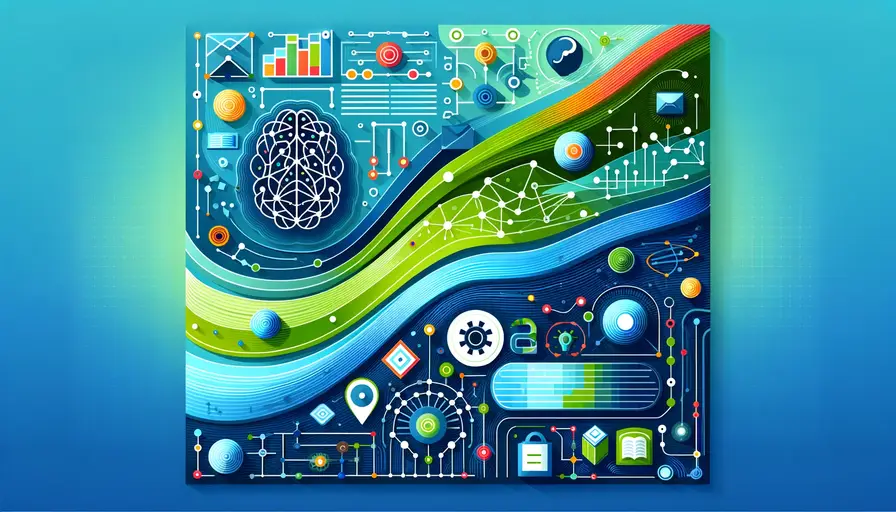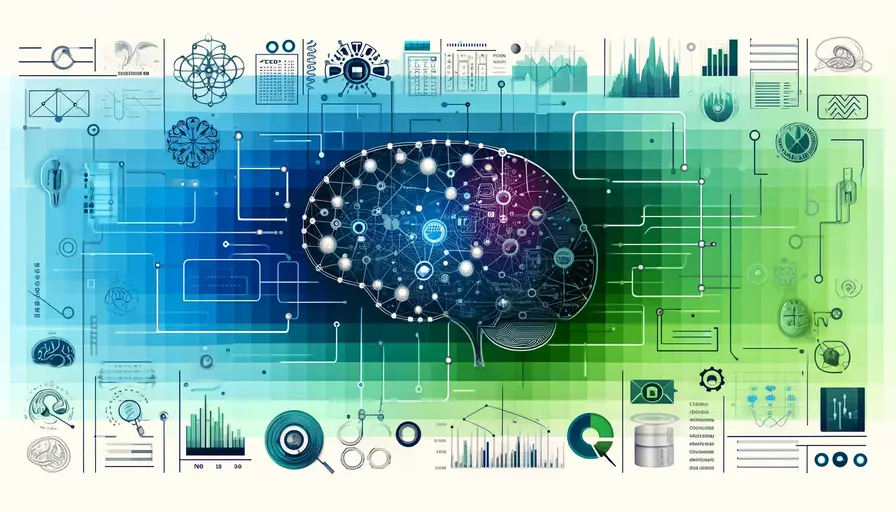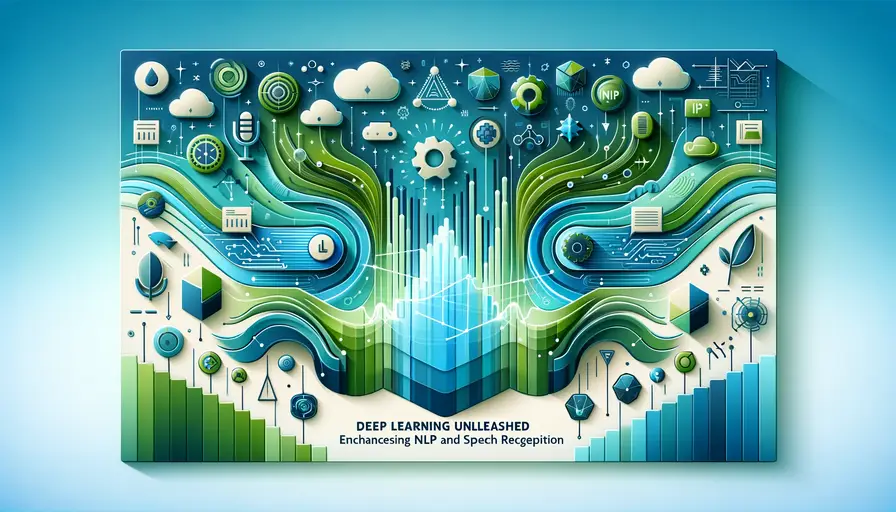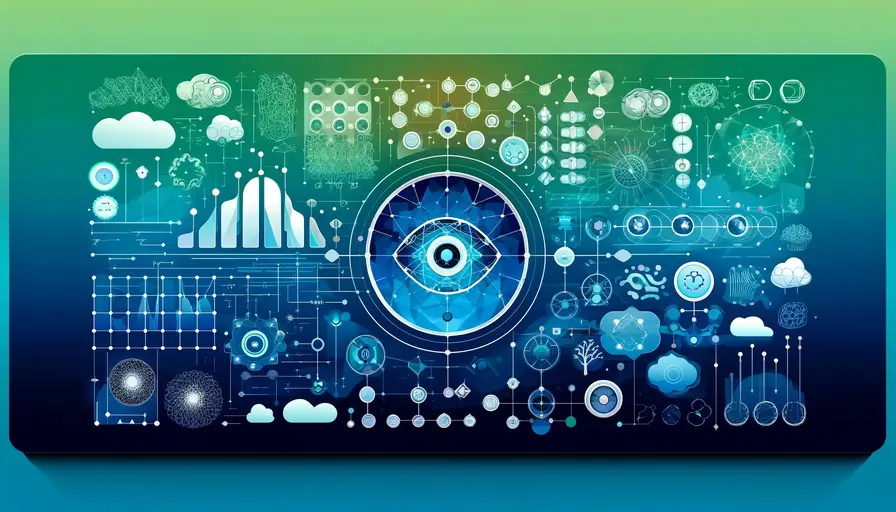
Non-Equilibrium Thermodynamics in Deep Unsupervised Learning

In the realm of deep learning, unsupervised learning plays a crucial role by enabling models to find patterns and structures in data without labeled outputs. The intersection of non-equilibrium thermodynamics and deep unsupervised learning opens up new avenues for understanding the learning dynamics of neural networks. This article delves into the principles of non-equilibrium thermodynamics as applied to deep unsupervised learning, exploring key techniques, models, and practical examples using Python. By examining these topics, we will uncover the potential benefits and applications of integrating thermodynamic principles into machine learning.
Non-Equilibrium Thermodynamics
The Concept of Non-Equilibrium Thermodynamics
Non-equilibrium thermodynamics is a branch of physics that studies systems not in thermodynamic equilibrium. Unlike equilibrium thermodynamics, which deals with systems in a stable state, non-equilibrium thermodynamics focuses on systems undergoing changes, characterized by the flow of energy and matter. These systems are typically far from equilibrium and exhibit complex behaviors that require sophisticated models to understand.
In non-equilibrium thermodynamics, the key idea is to describe the dynamics of systems as they evolve over time. This involves understanding how energy is exchanged, how entropy changes, and how these processes drive the system towards equilibrium. The principles of non-equilibrium thermodynamics can be applied to various fields, including biology, chemistry, and now, machine learning.
Relevance to Deep Learning
The relevance of non-equilibrium thermodynamics to deep learning lies in the dynamic nature of neural networks. Training a neural network involves iteratively updating its parameters to minimize a loss function, a process that can be seen as driving the system towards a state of lower energy. Understanding the learning dynamics through the lens of non-equilibrium thermodynamics provides insights into the optimization process, convergence properties, and generalization capabilities of the model.
 Understanding the Inner Workings of Deep Learning Neural Networks
Understanding the Inner Workings of Deep Learning Neural NetworksNon-equilibrium thermodynamics offers a framework to model the stochastic nature of gradient descent, the role of noise in training, and the emergence of complex structures in high-dimensional spaces. By integrating these principles, researchers can develop more robust and efficient learning algorithms, improve the interpretability of models, and potentially discover new optimization techniques.
Key Concepts
Several key concepts from non-equilibrium thermodynamics are pertinent to deep learning. These include:
- Entropy Production: In non-equilibrium systems, entropy production measures the irreversibility of processes. In deep learning, it can be related to the complexity and stability of the training process.
- Free Energy: Free energy combines the internal energy of a system with its entropy, providing a measure of the system's stability. In machine learning, it can be linked to the objective function that balances the fit to the data and the complexity of the model.
- Stochastic Processes: Non-equilibrium thermodynamics often deals with stochastic processes, which are also central to the training of neural networks. Understanding these processes helps in modeling noise and randomness in learning.
Example of simulating a simple thermodynamic process using numpy:
import numpy as np
import matplotlib.pyplot as plt
# Simulate a simple thermodynamic process (e.g., cooling of an object)
time = np.linspace(0, 10, 100)
initial_temperature = 100 # initial temperature in degrees
ambient_temperature = 25 # ambient temperature in degrees
cooling_constant = 0.1
temperature = ambient_temperature + (initial_temperature - ambient_temperature) * np.exp(-cooling_constant * time)
# Plot the cooling process
plt.plot(time, temperature)
plt.xlabel('Time')
plt.ylabel('Temperature')
plt.title('Cooling Process')
plt.show()Deep Unsupervised Learning
Principles of Unsupervised Learning
Unsupervised learning involves training models on data without labeled outputs. The goal is to uncover the underlying structure of the data, such as clusters, associations, or latent representations. Techniques in unsupervised learning include clustering, dimensionality reduction, and generative modeling.
 Exploring the Potential of Neural Networks in Reinforcement Learning
Exploring the Potential of Neural Networks in Reinforcement LearningClustering algorithms, like K-means and hierarchical clustering, group data points based on similarity. Dimensionality reduction techniques, such as Principal Component Analysis (PCA) and t-Distributed Stochastic Neighbor Embedding (t-SNE), reduce the number of features while preserving the essential structure. Generative models, like autoencoders and Generative Adversarial Networks (GANs), learn to generate new data samples similar to the training data.
Importance in Machine Learning
Unsupervised learning is essential for exploratory data analysis, feature learning, and data generation. It enables models to learn representations that can be used for various downstream tasks, such as classification and regression, even with limited labeled data. In scenarios where labeling is expensive or impractical, unsupervised learning provides a way to leverage large amounts of unlabeled data.
Moreover, unsupervised learning is crucial for anomaly detection, where the goal is to identify outliers or unusual patterns in the data. By learning the normal structure of the data, models can detect deviations that may indicate fraud, defects, or other anomalies.
Techniques and Models
Several techniques and models are commonly used in deep unsupervised learning:
 Deep Learning Enhancing NLP and Speech Recognition
Deep Learning Enhancing NLP and Speech Recognition- Autoencoders: Autoencoders are neural networks trained to reconstruct their input. They consist of an encoder that compresses the input into a latent representation and a decoder that reconstructs the input from the latent code. Variants like Variational Autoencoders (VAEs) introduce probabilistic elements to model the distribution of the data.
- Generative Adversarial Networks (GANs): GANs consist of two networks, a generator and a discriminator, trained in opposition. The generator creates fake data samples, while the discriminator distinguishes between real and fake samples. GANs are powerful for generating realistic data but can be challenging to train.
- Clustering Algorithms: Deep clustering algorithms combine traditional clustering techniques with deep learning to learn cluster assignments directly from raw data. Deep Embedded Clustering (DEC) and Deep Clustering Network (DCN) are examples of such models.
Example of a simple autoencoder using tensorflow:
import tensorflow as tf
from tensorflow.keras.datasets import mnist
from tensorflow.keras.models import Model
from tensorflow.keras.layers import Input, Dense
# Load the MNIST dataset
(X_train, _), (X_test, _) = mnist.load_data()
X_train = X_train.astype('float32') / 255.0
X_test = X_test.astype('float32') / 255.0
X_train = X_train.reshape((len(X_train), np.prod(X_train.shape[1:])))
X_test = X_test.reshape((len(X_test), np.prod(X_test.shape[1:])))
# Define the autoencoder model
input_dim = X_train.shape[1]
encoding_dim = 64
input_img = Input(shape=(input_dim,))
encoded = Dense(encoding_dim, activation='relu')(input_img)
decoded = Dense(input_dim, activation='sigmoid')(encoded)
autoencoder = Model(input_img, decoded)
encoder = Model(input_img, encoded)
# Compile the model
autoencoder.compile(optimizer='adam', loss='binary_crossentropy')
# Train the model
autoencoder.fit(X_train, X_train, epochs=50, batch_size=256, shuffle=True, validation_data=(X_test, X_test))
# Evaluate the model
encoded_imgs = encoder.predict(X_test)
decoded_imgs = autoencoder.predict(X_test)Integrating Thermodynamics with Deep Learning
Thermodynamic Principles in Training
Integrating thermodynamic principles into deep learning involves understanding the learning process as a thermodynamic system. During training, the model's parameters are iteratively updated to minimize the loss function, analogous to minimizing free energy in a thermodynamic system. This perspective allows researchers to apply concepts like entropy and energy landscapes to analyze and optimize learning dynamics.
Entropy production in a neural network can be linked to the complexity and stability of the training process. By analyzing how entropy changes during training, researchers can gain insights into the convergence behavior and potential overfitting of the model. Free energy, combining internal energy and entropy, provides a measure of the system's stability and can be used as an objective function that balances fit and complexity.
Stochastic Gradient Descent as a Thermodynamic Process
Stochastic Gradient Descent (SGD), a widely used optimization algorithm in deep learning, can be viewed through the lens of non-equilibrium thermodynamics. In SGD, random samples of data are used to compute gradients and update the model's parameters, introducing stochasticity into the learning process. This randomness can be seen as a source of thermal fluctuations in a thermodynamic system.
 Deep Learning with R: Benefits and Limitations Reviewed
Deep Learning with R: Benefits and Limitations ReviewedUnderstanding SGD as a thermodynamic process helps in modeling the role of noise in learning. Noise can help the model escape local minima and explore the parameter space more effectively, leading to better generalization. Thermodynamic principles can be used to develop adaptive learning rate schedules and regularization techniques that leverage the stochastic nature of SGD.
Applications and Benefits
Applying thermodynamic principles to deep learning offers several benefits:
- Improved Optimization: By understanding the energy landscape and entropy production, researchers can develop more efficient optimization algorithms that converge faster and avoid overfitting.
- Enhanced Interpretability: Thermodynamic models provide a framework for interpreting the learning dynamics, helping researchers understand how different hyperparameters and architectures affect the training process.
- Robustness to Noise: Thermodynamic principles can be used to design algorithms that are robust to noise and adversarial attacks, improving the reliability of deep learning models.
Example of using thermodynamic-inspired learning rate schedule in tensorflow:
import tensorflow as tf
from tensorflow.keras.datasets import mnist
from tensorflow.keras.models import Sequential
from tensorflow.keras.layers import Dense, Flatten
from tensorflow.keras.optimizers import Adam
# Load the MNIST dataset
(X_train, y_train), (X_test, y_test) = mnist.load_data()
X_train = X_train.astype('float32') / 255.0
X_test = X_test.astype('float32') / 255.0
# Build a simple neural network model
model = Sequential([
Flatten(input_shape=(28, 28)),
Dense(128, activation='relu'),
Dense(10, activation='softmax')
])
# Define a thermodynamic-inspired learning rate schedule
initial_learning_rate = 0.01
decay_steps = 10000
decay_rate = 0.96
lr_schedule = tf.keras.optimizers.schedules.ExponentialDecay(
initial_learning_rate, decay_steps, decay_rate, staircase=True
)
# Compile the model
model.compile(optimizer=Adam(learning_rate=lr_schedule), loss='sparse_categorical_crossentropy', metrics=['accuracy'])
# Train the model
model.fit(X_train, y_train, epochs=10, batch_size=32, validation_split=0.2)
# Evaluate the model
loss, accuracy = model.evaluate(X_test, y_test)
print(f'Accuracy: {accuracy}')Case Studies and Practical Applications
Image Recognition
Non-equilibrium thermodynamics can enhance image recognition tasks by improving the training dynamics of convolutional neural networks (CNNs). By applying thermodynamic principles, researchers can develop training algorithms that achieve better convergence and generalization, resulting in more accurate and robust models for tasks such as object detection and image segmentation.
 Deep Unsupervised Learning and Nonequilibrium Thermodynamics
Deep Unsupervised Learning and Nonequilibrium ThermodynamicsFor instance, using thermodynamic-inspired regularization techniques can help prevent overfitting, ensuring that the model performs well on unseen data. Additionally, adaptive learning rate schedules based on thermodynamic principles can optimize the training process, leading to faster convergence and better performance.
Natural Language Processing
In natural language processing (NLP), integrating non-equilibrium thermodynamics can improve the training of models for tasks such as language modeling, translation, and sentiment analysis. By understanding the learning dynamics as a thermodynamic process, researchers can develop more effective optimization algorithms that handle the complexity and high dimensionality of NLP data.
Thermodynamic principles can also be used to design noise-robust training algorithms that improve the stability and accuracy of NLP models. This is particularly important for tasks that involve large and diverse datasets, where noise and variability can significantly impact performance.
Generative Modeling
Generative models, such as Generative Adversarial Networks (GANs) and Variational Autoencoders (VAEs), can benefit from the integration of non-equilibrium thermodynamics. Understanding the training dynamics of these models as thermodynamic processes can help in addressing challenges related to mode collapse and instability.
 Calculating Parameters in a Deep Learning Model
Calculating Parameters in a Deep Learning ModelThermodynamic-inspired techniques can be used to design better loss functions and training algorithms for generative models, leading to more stable training and higher-quality generated samples. By leveraging the principles of free energy and entropy, researchers can develop generative models that are more robust and capable of producing diverse and realistic outputs.
Example of a simple GAN using tensorflow:
import tensorflow as tf
from tensorflow.keras.datasets import mnist
from tensorflow.keras.models import Sequential
from tensorflow.keras.layers import Dense, Flatten, Reshape, LeakyReLU, BatchNormalization
# Load the MNIST dataset
(X_train, _), _ = mnist.load_data()
X_train = X_train.astype('float32') / 255.0
X_train = X_train.reshape(X_train.shape[0], 28, 28, 1)
# Define the generator model
def build_generator():
model = Sequential([
Dense(256, input_dim=100),
LeakyReLU(alpha=0.2),
BatchNormalization(momentum=0.8),
Dense(512),
LeakyReLU(alpha=0.2),
BatchNormalization(momentum=0.8),
Dense(1024),
LeakyReLU(alpha=0.2),
BatchNormalization(momentum=0.8),
Dense(28*28*1, activation='tanh'),
Reshape((28, 28, 1))
])
return model
# Define the discriminator model
def build_discriminator():
model = Sequential([
Flatten(input_shape=(28, 28, 1)),
Dense(512),
LeakyReLU(alpha=0.2),
Dense(256),
LeakyReLU(alpha=0.2),
Dense(1, activation='sigmoid')
])
return model
# Compile the GAN
generator = build_generator()
discriminator = build_discriminator()
discriminator.compile(optimizer='adam', loss='binary_crossentropy', metrics=['accuracy'])
# Combine the models to create the GAN
gan = Sequential([generator, discriminator])
discriminator.trainable = False
gan.compile(optimizer='adam', loss='binary_crossentropy')
# Train the GAN
import numpy as np
def train_gan(gan, generator, discriminator, X_train, epochs=10000, batch_size=64):
for epoch in range(epochs):
# Train the discriminator
idx = np.random.randint(0, X_train.shape[0], batch_size)
real_images = X_train[idx]
noise = np.random.normal(0, 1, (batch_size, 100))
fake_images = generator.predict(noise)
d_loss_real = discriminator.train_on_batch(real_images, np.ones((batch_size, 1)))
d_loss_fake = discriminator.train_on_batch(fake_images, np.zeros((batch_size, 1)))
# Train the generator
noise = np.random.normal(0, 1, (batch_size, 100))
g_loss = gan.train_on_batch(noise, np.ones((batch_size, 1)))
# Print the progress
if epoch % 1000 == 0:
print(f"{epoch} [D loss: {d_loss_real[0]}] [G loss: {g_loss}]")
train_gan(gan, generator, discriminator, X_train)Future Directions and Research Opportunities
Advancements in Thermodynamic Models
Future research in non-equilibrium thermodynamics and deep learning will likely focus on developing more sophisticated thermodynamic models that capture the complexities of neural networks. This includes exploring new formulations of entropy and free energy that are better suited to the high-dimensional and non-linear nature of deep learning models.
Researchers may also investigate the role of non-equilibrium thermodynamics in understanding the generalization properties of neural networks. By studying the relationship between thermodynamic variables and model performance, new insights into the factors that influence generalization can be gained.
Integration with Quantum Computing
The integration of non-equilibrium thermodynamics with quantum computing represents an exciting frontier in machine learning research. Quantum computing offers the potential to solve complex optimization problems more efficiently than classical computing. By leveraging quantum thermodynamic principles, researchers can develop new algorithms that take advantage of quantum parallelism and entanglement.
Quantum machine learning algorithms that incorporate thermodynamic concepts could lead to breakthroughs in model training and optimization, particularly for large-scale and high-dimensional data. This interdisciplinary approach holds promise for advancing both quantum computing and machine learning.
Ethical and Societal Implications
As with any technological advancement, the integration of non-equilibrium thermodynamics in deep learning raises important ethical and societal considerations. Ensuring that these models are developed and used responsibly is crucial. This includes addressing issues related to bias, fairness, transparency, and accountability.
Researchers and practitioners must prioritize ethical guidelines and best practices, ensuring that the benefits of these advancements are accessible to all and do not perpetuate existing inequalities. By fostering a culture of responsibility and openness, the AI and machine learning communities can ensure that these powerful technologies are used for the greater good.
In summary, the integration of non-equilibrium thermodynamics with deep unsupervised learning offers exciting opportunities for advancing our understanding of neural networks and improving their performance. By exploring the principles of thermodynamics, researchers can develop more efficient optimization algorithms, enhance model interpretability, and create robust and reliable AI systems. The future of this interdisciplinary field holds great promise for driving innovation and achieving new breakthroughs in machine learning.
If you want to read more articles similar to Non-Equilibrium Thermodynamics in Deep Unsupervised Learning, you can visit the Deep Learning category.






You Must Read